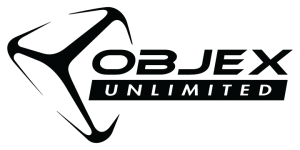What you need to know about adding 3D printing as a new revenue stream
Originally Published in March 2015 Issue of Graphic Arts Magazine. Objex Unlimited worked with closely with Graphic Arts Magazine to write articles catering to a print media and graphic arts crowd to educate about 3D Printing. This is the first of this series of articles.
A look at the products, misconceptions and opportunities of taking your business from 2D to 3D printing.
3D printing is an exciting, emerging technology. From cars, to dental implants, to human organs… from customized works of art, to functional prototypes and tools… the list of what can now be printed on a 3D printer is constantly growing.
But what are the obstacles? Most importantly, how can you add 3D to your existing digital or offset products and services? To answer these questions, I asked Steve Cory, president of Objex Unlimited 3D Printing Studio, based in Toronto. This full-service Canadian firm is at the forefront of the 3D printing revolution, partnering with clients in developing and commercializing technologies, products and processes – from concept to final result.
“The demand for 3D services is already present, and your competition is likely already capitalizing on it. To match or exceed this, you must bring a new level of interest to existing and prospective clients by showcasing this cutting-edge technology to them in an affordable way. Traditional methods of producing a model are extremely costly, but 3D Printing has opened many doors,” says Cory. “What we believe to be most important is educating your customers about the technology and managing their expectations. There’s a plethora of machines in the realm of 3D and it’s a matter of finding the best software and equipment for the particular application. Whether you use our services, purchase from us, or simply use us as a resource, we are always here to help.”
The 3D process and the misconceptions
“With 3D Printing comes many pre-conceived misconceptions, the most common being that the 3D Printer is an all-in-one solution; you just push the “start” button and anything you imagine will materialize! The bulk of the work comes both before the print begins, and after the print completes. The 3D Printing champions are definitely 3D designers who do a bulk of the work before it even reaches a printer, and the model finishers who treat, finish, and make the model the best it can be.”
There are many steps in generating that ideal 3D Printed model. From the moment you have your idea, your next step should be to understand the different printing technologies and materials. For example, each printer (and each material used) has different properties that govern how you should initially design your file. You have to ask yourself a few questions:
- Which material is best for your prototype? Are you looking for plastic, rubber, or a specific type of resin? Does it need to be medically certified?
- What kind of strength and fit do you need? Like digital printers, 3D printers have different tolerances and strengths, which should be factored into initial design.
- What is your desired end product? Are you going to make a cast or mold from the model? Will it be a display model? Or will it be a functional, ready-to-use part?
- Do you need a specific colour or surface finish? Would you like your print to be full-colour CMYK? Or do you need something transparent?
The role of 3D scanners
You don’t always need to start from scratch! Perhaps you already have some kind of physical object or model you’d like to work with. 3D Scanners are an outstanding tool to give you a jump-start on your design, even if some kind of post-processing and 3D design work is often necessary. Maybe you’re looking to reverse engineer something you already have, and break it down into a digital design. Maybe you want to build a custom-fit part, like making a wing or part that fits your particular car, or a wearable item formed perfectly to your body. Maybe you want to scan of a person to commemorate a special occasion.
Again, you’ll be faced with a choice; which scanner is best for you? What’s your budget? Will you need a mobile scanner? Stationary scanning booths invariably render better accuracy and detail. Do you need to capture colour, or just geometry? Is the object you are scanning large or small?
Choosing a 3D printing partner
Today’s successful companies should provide more than just hardware. You need – and should expect – ongoing expertise and tech support for rapid prototyping, 3D scanning and digital imaging. This includes personal and professional service training, plus consulting and workflow management. Most importantly, your supplier should tell you how to capitalize financially on 3D printing opportunities by providing sales and marketing support – including lead generation, referral programs and even discounts on services and equipment.
Some cool new 3D printing options
So what 3D products are end-users buying? Full-colour, photo-realistic 3D prints continue to be big sellers. Photo-realistic 3D people models as well as 3D-printed pet models are also extremely popular. On the commercial side, rapid prototyping and custom personalized devices are on the rise. In the final analysis, you must determine what will your client base wants – both on a personal and business level. Giving them exciting new 3D ideas by promoting all that you can do and getting actual physical samples into their hands is a great beginning.”




Leave a Reply
Want to join the discussion?Feel free to contribute!